
Vampyrism in its Many Different Forms

Vampyre kind often speak of The Beacon. That thing that draws us to one another. Do you know when you’re in the presence of another vampyre? Do you know what your beacon might say about you?
Often, especially at first, or when your senses aren’t as sharp, the vampyric beacon can be incredibly subtle. A change in the vibrations in the air, the look in someone’s eyes, being inexplicably drawn to someone and feeling compelled to say hello or even compelled to look away. That experience where you’re in a large crowd but one person has all your attention; you’re drawn to them, fascinated, but the interest isn’t romantic or sexual, though some can definitely mistake it for that on occasion.
Often inexperienced vampyres are drawn to the awakened, and just as often awakened vampyres are drawn to the potential of the unawakened/latent vampyre. Many of us have a need to find others like us and draw out their true nature, nurture it. We need companionship, community, energy exchange. Not just with non vampyres, but with those like us who share our needs. Instant connections and deep bonds are common. There is often a feeling of familiarity or home when vampyre kind encounter each other.
Potential donors and allies are often inexplicably drawn to vampyres as well. Whether or not a specific vampyre is also drawn to that particular potential donor in return is much less consistent. Vampyres will be drawn to potential donors who are right for them, but it is not unusual for potential donors to be drawn to a vampyre who does not return their attraction or connection. Many vampyres attract all sorts of people including ones they would rather not attract; it’s part of our nature.
For many, the understanding and knowing doesn’t go much deeper than that. The beacon is often very surface level. You’re drawn to someone and when you lock eyes you just know. Sometimes it’s not even that strong, you’re just drawn to someone and getting to know them reveals they are also a vampyre or are interested in being a vampyre’ s donor. You can, however, hone it and your other psychic senses so that you can learn to identify even more information about a vampyre without intruding upon their energy. When you strengthen your psychic senses and energy perception skills, you can learn to see and/or feel auras and energy bodies, especially your own, you can see various traits that many vampyres have in common. Sometimes, you can even get a vague sense of where your vampyric need might stem from.
While it’s possible to learn to see or otherwise sense information about people’s energy, it’s important to remember that we can’t and shouldn’t go around diagnosing people as vampyres or poking too deeply at people’s auras or energy without permission. Different people have different senses of what is and is not ethical to see and do. For me, I don’t poke at anything I don’t see naturally just by looking or feeling as I naturally would without invitation. Gathering information about helps me understand how to interface with someone else and their energy, and, if they ask me, it can help me provide insight for them into how and why things work the way they might for them. While I may naturally pick up cues and details about people that may or may not suggest vampirism in someone near me, but I’m never going to be as presumptuous as to tell someone what they are. That isn’t kind, consensual, or fair. And I can never know someone better than they know themselves, but if someone wants an outside perspective, I often pick up on details that might provide them some insight. That said, it isn’t a hard and fast or definitive system. Like most things along this path, the information in the article is very subjective and best applied to better understanding yourself than it might be to trying to look at or define others. Many of these traits could also have other root causes and even if they don’t, if the archetype of vampire doesn’t resonate with someone, and they don’t identify with it, how much value does that label have for them anyway?
That said, many vampyres have distinct energy flavors to them. It’s not unusual for vampyres to have a chthonic vibe, and many others have a very primal or animalistic energy to them but they don’t feel like any known animal or being, almost fully human, yet not quite. Just different enough to be unsettling or inspire fear. There is sometimes a bit of an uncanny valley feeling, especially if the vampyric person is also fae. Some vampyres are incredibly captivating and alluring, they may command a room and attention very easily. They might be skilled orators, story tellers, or performers. People often want to be around them just as much as the vampyre wants or needs to feed off that energy.
There is often either an intense magnetism or intense repulsion. Though magical and psychic resource texts tend to speak more of the repulsion or the vampyre draining entire rooms or stirring up drama to feed. We’ve all heard accounts of someone sitting in a room with their tendrils all over the place as they take in drama or rob people of their joy. Accounts of non-consensual deep feedsVampyric feeds come in different types and levels in terms of how much personal energy is taken from a specific person’s own aura or energy body. Ambient feeds don’t take personal energy at all from anyone specific, instead pulling energy from a room or location that has already been cast off by people and other living beings. Surface feeds pull energy from the very surface of someone’s aura, not usually touching the deeper energy body itself. This is the area when many vampyres believe we need to start asking for consent to feed, but it is a grey area for some depending on their ethical compass. This is definitely someone’s personal energy, but it isn’t the deepest or most intimate parts of their etheric self. Deep feeding is feeding by way of extending your energy/tendrils into someone else’s energy. This level is personal and intimate and is achieved by the vampyre essentially lightly puncturing their donor’s energy body to get energy from within the donor. This absolutely should be both consensual, and explicitly negotiated. Usually the donor and often the vampyre might need some aftercare or rest after this process, though it is usually enjoyable and benefícial for both parties. This level clearly has the most risk and is the most complex to achieve. You may hear vampyres talk about contact feeding, that simply a word for feeding achieved by physical touch instead of just energetic touch. A contact feed may be surface level or deeper. Usually achieved with the hands or mouth, but other body parts can be involved for sure. This is just a quick overview. There are a lot of nuances, details, and moving parts to all of these processes and definitions. I’m barely scratching the surface here. It should also be noted that different Vampyres or groups may use or define these terms slightly differently.
that do a lot of harm. That is certainly something that happens with unaware vampyres(and also does happen with awakened vampyres too. We don’t all have the same ethics, and unfortunately there are people out there who don’t value consent and just take whatever they want no matter who it harms, but not everyone is like that. I’d argue most of us aren’t like that, no matter what the dominant narrative is among people who don’t understand us.) But because most of us are handling our needs consensually and often privately with trusted companions and donors, the outside world often only ever comes into contact with those who present a danger to them. It may come as a surprise to many, but a vampyre is just as likely to be a performer, a healer, or a skilled energy worker—someone who is stoking the energies of a party, show, or ritual. Building up the vibe and fine tuning it to something powerful, moving, and electric, both for the benefit of the group but also so they can feed on the excess. Excess that doesn’t belong to any one person and wouldn’t harm anyone to take because we’ve collectively built and put that energy out into the world. Energy we’re already released and disconnected from our personal energy and aura.
There isn’t just one textbook way that vampyrism can manifest because there isn’t just one type of vampyrism out there. Even within the vampyre community folks can sometimes struggle with this. Historically, there have been strongly held beliefs and a bit of “one true way-ism” in our community, some of which I’m sure isn’t intentional. As a community we have had to sort out so much of things on our own based on lived experience and we can only account for our own nature, especially when we don’t have a lot of contact with others who might be like us, or unlike us as it were. So between that and the folks who very much are preaching a “my way is the only way” narrative, there isn’t always a lot of space to talk about nuances or the fact that vampyrism isn’t actually a one size fits all kind of thing.
Once you have a suspicion that you’re a Vampyre, there are different ways to start to try to distinguish different types of human living vampyres. Some people care about these distinctions, and others do not. As mentioned above, some people don’t even believe that all these variations really exist. Some people like to know the how and why, and for other people the end result and practicality of things is the only part that matters. I think it’s important to present information and possibilities and let folks decide for themselves what matters to them.
Human vampyres can be broken down into different types based on how and why they need what they need. I’m not going to get too much into the distinctions we talk about regularly. I don’t need to rehash sang vs psi vs eros/carnalis etc. (and it’s important to note, that folks of the types I am going to describe may choose or need to meet their needs through any of the above. There is a lot to unpack here and lots of different viewpoints about what exactly a vampyre needs/feeds on. Many people believe it’s all energy or life force. I’m not one of them, many people are feeding on energy and life force, but I do believe that for folks who crave and need blood at least some of those people—not all—are feeding on something more physical and their vampyrism is more physiological but that is outside the scope of this particular articleI do want to state that there are people who may or may not consider themselves under the vampire umbrella or vampyre adjacent who believe they have a physiological need to consume blood that doesn’t have anything to do with energy at all. Many of these people want to distance themselves from the vampyre community, and many more wish to be studied by science to get a better idea of what is going on with them. I think there is a lot of validity to their experience, claims, and desires and I personally believe many blood drinkers could be experiencing something physical in their bodies instead of something energetic, etheric, or magical. There truly are so many experiences under this umbrella. Can this sort of condition be seen in your energy body? The people experiencing it might often claim no; they might not even believe in energy bodies at all. But plenty of people who do believe in energy bodies can often see or sense many other kinds of physical injuries and health conditions, so who is to say they couldn’t sense this too.
It can be useful, especially through the lens of magic workers, healers, and those with strong psychic abilities to know that not all vampyrism is the same or stems from the same root cause.
We often distinguish vampyres based on their feeding needs, be that what they feed on or why they feed on it. All living beings have energy or life force needs, but vampyres have different needs, some might say greater needs, others might say we simply go about meeting our needs differently for one reason or another. Some vampyres are just built different. Etheric wounds or sickness are a common experience or explanation for vampyrism. Some vampyres in this camp will only feed vampyrically for a short time, while some other vampyres will be vampyres their entire lifetime. For others still, it is truly permanent, lasting multiple lifetimes (if you’re the sort of person who believes in that kind of thing.) Some vampyres need to feed the way all humans need to drink water or breathe air. Some vampyres need to feed in the way that some humans need to take insulin for diabetes, or take medication to treat illness or manage pain. Even beliefs and worldviews of magic, spirits, and the afterlife vary wildly amongst vampyres. There are no universal truths beyond the fact that so many people with so many different experiences claim the title of ‘Vampire’ to describe their identity and relationship to the world.
Some vampyres are the way they are because they are predisposed to be tapped in to The Vampyre CurrentThe Vampyre Current is a sort of cultural zeitgeist that covers the entirety of vampiric essence. (But rather than being specifically the overall mood or vibe of a period of time, it is more the defining vibe of a particular concept) It is an energy flow that moves around and through vampyre identified people as well as our general understanding of vampires throughout human culture. This includes things like cultural narratives and folklore of the vampire, it includes various egregores created by historical/folkloric belief in vampires as well as ferver surrounding pop cultural depictions of vampires, and even occult constructs created through belief, ritual and magic from vampyric orders and esoteric paths. It includes the vampyre subculture and all traditions therein as well as all the ways humans might be inclined to call themselves vampyres or spirits we might want to liken to vampires. Cultural and mythological depictions of things like “a river of blood” are also a part of this current and many believe those rivers are one of the simplest paths to tapping into or understanding vampyric energy. For some, the Current is a bit of a collective consciousness that is building a bit of a magical ancestral lineage. For others the current is simply metaphor or shorthand to describe all things vampire and the ways they are connected. By claiming and invoking the name vampire, we are all connecting to a unified concept even if the fine details of what that means person to person is wildly different. That invocation links us all together and links us back to those folkloric ideas. It’s a bit of a loose and subjective concept that many struggle to articulate. Many don’t even recognize or believe in it all. It’s enigmatic just as the Vampire™️ is enigmatic.
This could be any number of reasons, I suppose, it could be from past lives, it could be from spiritual contracts and debts, it could be due to relationships with certain deities and spirits. It could simply be by chance.
Some vampyres are otherkin-like folks who have spiritual connections, past lives as, or are incarnations of entities that are vampiric or vampire adjacent (things like Baobhan Sith, Leanan Sidhe, Incubi & Succubi, and other such spirit entities that consume human blood, vitality, inspiration, or life force. Sometimes this overlaps with being fae or other such otherkin).
There are theories and beliefs that on some occasions vampyrism can be caused by spirit attachments, energetic parasites, and symbionts.Wing Wolf has some really fascinating yet controversial books that do a deep dive on these and related topics. This line of thinking is not nearly as commonly held as other beliefs, and some people have even met them with disbelief and disapproval. This sort of thing doesn’t seem at all common to me, in my personal experience, as other causes (I have never encountered it in person myself, only having heard others discuss their experiences), but it could be in the realm of possibility, despite some community pushback and hostility from time to time. My experiences as an energy and spirit worker lead me to believe this might occasionally be happening in at least some tiny minority of the vampyre population, but I have never seen it myself and you might be hard pressed to find many other vampyres who have even considered the possibility. Do I think it’s happening often? No. The vast majority of vampyres are not having that kind of experience at all, but I don’t necessarily believe that it could absolutely never happen under any circumstance ever either. Parasitic and vampyric entities can exist depending on how you define those terms, it makes sense that they could have some sort of impact on a human being and their energy systems. This isn’t an area I have any real experience with, though.
There have been working theories in some otherkin and therian communities that the reason there might be a fair bit of overlap between vampyres and therians/otherkin is that the misalignment of their human shape and spirit shape creates a need to take in more human energy so they can more easily fit into their human body and more easily process human energy. Some believe they don’t make enough human life force energy on their own and that their otherkin nature causes them to produce a life force energy more aligned to their kin type (that their human body can’t process as well) and they need more human flavored life force energy to get by and function in a more balanced way. Some otherkin believe they burn through human life force energy so fast that they need to take in extra to avoid burning all the way through their energy in a way that becomes harmful to their well being. Some people in this or similar camps believe that since the origin of their soul or energy body is from somewhere other than earth and they are nonhuman, and as such, they are wholly incompatible with the energies of earth or a human body—the energy their human body should produce on its own just does not happen naturally.
Life force energy is universal in many belief systems, yes, but I think it can also be true that a square peg fits best in a square hole even if it can squeeze through a hole of another shape. I’ve seen enough therians, otherkin, or folks with past life memories to know that while something may fit or work, it isn’t always ideal, but that’s a topic for another day.
Some people use language like primary vampyrism and secondary vampyrism to set apart different types of vampyric feeding or need. In short, a primary vampyre is someone born the way they are, and a secondary vampyre is someone who comes by their nature later in life, somehow acquiring it. I don’t particularly appreciate that language and its hierarchical implications, though the spirit of those distinctions can be very helpful to many people. I also find it less descriptive than it could be, believing it lacks a fair amount of nuance, but I don’t take issue with anyone who likes or uses those terms. I definitely understand how folks might find them useful, especially in the absence of anything else. Personally, I think there is enough tension and power struggle in our community already. I try not to contribute to it by adding a hierarchy of need into the mix, even though, in my understanding, creating a hierarchy wasn’t the intention of these terms.
I’ll be the first to admit that while I have terms that work for me and my understanding of things, I will never presume that they will work for everyone or should be adopted as law across any community. While I do hope these terms and distinctions are useful for others, I have no qualms about others disregarding them or not finding them useful. Especially since so much of vampyric nature is about personal experience and self identification, I don’t want to take that away from anyone. We’ve all fought hard to figure out who and what we are. There is nothing about my experience or worldview that is inherently more or less valuable to anyone else’s. I just want to provide more information on understanding — especially within yourself. For many, diving deeper into their nature or needs, and what might be at the root of them, helps them make practical choices about meeting those needs.
Terminology I personally find useful includes ‘innate vampyrism’, ‘sympathetic vampyrism’, and ‘injury or illness based vampyrism’. There is also a well known subset of vampyres that call themselves Kheprians and while some might be inclined to lump them under other groups or classifications, I personally view them as their own distinct type. I also sometimes refer to etheric or spirit entities that are vampiric in nature or at least vampire adjacent, but this is not a category of vampire than any human living person can be, so while I will give a few tips for identifying those types of entities, I won’t focus on them.
I also won’t touch on occult type vampyres who serve vampiric deities or egregores who feed either to gather energy for their deity (rather than for their own needs) or who serve a deity, entity, or egregore with the goal of gaining vampyric powers, transformation, or other such gifts. Nor will I discuss the types of vampyres who believe they have been ritualistically made into a Vampyre or assume a Vampyre archetype for personal empowerment or in pursuit of apotheosis. I don’t have a lot of experience there, especially given the more secretive and oathbound nature of some of those groups. That experience, while absolutely a part of the broader vampyre community, is outside of the scope of my knowledge and this article. The vampyre community contains way more different experiences and expressions than I can explore here, and even more that I haven’t come into direct contact with.
Also outside of the scope of this article are folks some might call “lifestylers”, “roleplayers”, or “archetypical vampires”. People who dress up and put the vampire on as a costume, or persona because it brings them joy. A sort of vampire enthusiast and fandom that has more in common with cosplay than it does spirituality or energy work. More often than not, people use these terms to refer to people who do not identify as real vampyres, do not engage in vampyric feeding, and don’t connect with the vampyre archetype on a spiritual level, thought it should be stated that there absolutely is quite a bit of overlap between Vampyres as I am discussing them here, and lifestyle/roleplay/archetypical enthusiasts. Plenty of people are both! 🧛🏻♂️
Potential Traits
Before we get back into the different subtypes, I want to share some etheric traits or energy body features that might be found in a vampyre of any type. It’s not unusual for vampyres of all kinds to have these sorts of things in their auras, energy bodies, astral forms, etc. Please keep in mind during the rest of this article that all of this is highly subjective and can be incredibly nuanced. Many of these potential traits can and do have all sorts of other causes outside of vampirism. Exercising discernment and critical thinking is important, and jumping straight to vampirism without considering other options has the potential to cause harm. This is not a checklist of hard and fast rules, there will always be exceptions and variations, these are simply patterns I’ve noticed in my time. It’s okay if this doesn’t resonate with you or if my personal symbol set or explanation of things does not align with yours. My main goal is to get people started thinking about themselves and how they perceive their vampyrism, energy, energy flow, and energy bodies. Take some time to sit with your energy and awareness and see if any of this might apply to you! Or maybe employing any of these as image, metaphor, or visualization could be helpful.
-
Tendrils
-
Tendrils can either be super fine and filament-like, so fine they may be hard to perceive at all, or tendrils can be large often similar to snakes or tentacle-like structures. Some vampyres use one large tendril or they have many coming from all directions and points on their energy body. Many vampyres have somewhat large tendrils that come from their hands and mouth; I find this to be especially common in folks who prefer to contact feed or who like to feed on sensual and sexual energies. For some, tendril appearance is subject or ever changing, or for others it seems more concrete. I’ve met folks who manipulate and change their tendrils in all sorts of ways, and folks who use or perceive the same image every time
-
-
Net like structures stemming from energy centers or the body as a whole
-
Netlike structures are super common in folks who ambient feed often or like to feed from crowds and groups, or who like to take in larger amounts of energy at once.
-
-
Vampyric auras are often noticeably different to non vampyres. In some that can be dark, hazy or mist-like, they can even appear almost absent—often times the vampyric aura is meant to obscure or pass unnoticed, though it isn’t at all unusual for the opposite to be true. Bright, intense, loud, and gorgeous. Meant either to attract or warn of potential danger. Maybe a bit of both. It’s not unusual for energy workers and sensitive to perceive vampiric energy as feeling almost uncanny or unsettling
-
A Vampyre might smell of longing and hunger, or taste like the night, death, rebirth, or transformation for folks whose psychic senses are more linked to smell and taste
-
Energy structures or body parts that extend far beyond what is typical for most people, grasping at and feeding on the energy around us, or the opposite, not as many structures or parts as is typical for most people. Though there is so much variation in energy bodies and structures that this one is a lot harder to pick out or make sense of. A broader context of other traits can make this more or less clear. Or maybe it won’t energy bodies are truly wild 😅
-
Vortex or maelstrom like energy structures, auras, or energy bodies as a whole
-
Contact feeders might have vortex for maelstrom like movement at their hands, mouth, and genitals either instead of, or in combination with tendrils or nets
-
This maelstrom movement is a common way for folks to ambient feed or feed from crowds and groups, drawing the energy in with a suction or storm like pull instead of reaching in and grabbing it with a tendril.
-
Some folks even have this sort of vortex of maelstrom at the end of their tendrils or make a huge maelstrom or vortex of tendrils. There really is a lot of possibility here!
-
-
Magnetism, be that in their energy, their personality, in their eyes, or in some sort of vague sense
-
Lots of red, purple, black, or grey energy in the aura that is consistently present, especially if it has the sense of those colors not meaning what they might typically mean in your personal symbol set
-
The aura or energy of a vampyre may vary in size, intensity, or density of energy, especially as you move through a cycle of need and feeding and processing, the energy may be more or less robust depending upon how well fed you are or how recently you have fed. These difference may be more subtle or incredibly obvious depending on how well you keep up with your needs among other things
-
As a Vampyre, you may appear to others to be surrounded by or holding lots of different energy including energy that is obviously not your own (this is most visible/noticeable directly after a feed, especially a deep one, and may go away once you have fully processed and integrated the energy of the feed)
-
Feeling of hunger and need (some folks can feel the hunger and need radiating off of vampires, even when we are well fed. Other folks struggle to identify us as what we are when we are well fed. I always wonder how much of this is about vampiric nature itself and how much of it is about the perceptive abilities of the person observing)
Innate vampyres
Innate vampyres are people who simply are fundamentally vampire in some way. They have the vampyre current running through them, and many believe the nature of the vampyre is simply marked on their soul and/or energy body. Some people describe this as a somewhat difficult to articulate X factor, but they know it when they feel it. For innate vampyres who believe in reincarnation or other afterlives, they might believe their vampyric nature will carry over with them from life or life or in any sort of afterlife they experience. Innate vampyres may or may not view themselves as otherkin or having an otherkin adjacent/compatible experience. A vampyre of this type might themselves as having a need to feed, but that need is more like the way a human being needs to breathe. It’s simply a fact of their existence. It doesn’t stem from any injury or illness. There is sometimes a belief that feeding gets these types of vampyres functioning to their most optimal level and that level is a notch (or more) up from that of a non vampyric person. Feeding might bring them heightened senses, increased or more honed psychic or magical ability, and an overall more enjoyable quality of life. Innate vampyres often seem to enjoy the process of feeding and rarely feel burdened by it, no matter what they need to feed on. More often than not, this type of vampyre also has consensual donors with whom they engage in deeper feeding from the donors’ personal energy. This arrangement is usually mutually enjoyable and beneficial when well managed. Vampyres of this type occasionally, but do not always, experience a hunger or desire for more and bigger. More life, more experiences, more energy, more possibility, more potential. That hunger motivates action and change and transformation, often draws people to magic and occultism. They often view their vampyrism as a gift that they honor and respect, some may even take it steps beyond that. Innate vampyres often have a natural glamour about them that draws in potential donors.
Etheric traits common in Innate vampyrism:
-
Rapid and overwhelming use and movement of energy. Burning through energy so fast and at such a quantity that a need to feed is produced in order to keep up
-
Prickly but electric auras
-
An energy that feels the way black light and bioluminescence looks
-
The aura and energy may be particularly sharp, clear, and in hyper focus compared to non Vampyres
-
Heightened psychic skills or inclination toward magical arts
-
An innate vampyre may produce both a sense of fear and a sense of strong attraction, often simultaneously
Illness or Injury Based Vampyres
Some vampyrism stems from extensive trauma to the energy body, including but not limited to, damaged or missing energy centers, or illness of a spiritual nature. Sometimes that may come from etheric attack, or harm from otherworldly creatures, spirit entity attachment, or banework from another magic worker, though the last one is far less common. And some folks are simply born without healthy or complete systems necessary to process vital life force energy correctly—the way a person could be born with any other injury or illness. A particularly traumatic birth, where a person’s connection to life might become a little tenuous could possibly account for vampyrism of this nature. Some vampyres of this type believe they acquired their condition at some point later in their life, be it through trauma or another intense experience. There are vampires who believe they are entirely cut off from certain life force and energy sources and they cannot process them well or at all and thus need to borrow from others—though they are just as likely to be innate vampyres as they might be injury based vampyres. There are vampyres of this type who believe that their condition either is or has become inherent to them or their energy body, but some believe their condition is or could be curable. This is a bit of a hot button topic within the community that is very emotionally charged and personal for a lot of people.
These vampyres usually need to feed in order to function at a normal or near normal baseline compared to people around them. It is not uncommon for these folks to describe their vampyrism as something of a diabetes of the soul/spirit/energy body. They usually believe they have a sort of deficiency when it comes to vital life force energy, they may not produce enough, they may not be able to hold on to what they produce, they might have energy body leaks, or poorly functioning energy centers. They usually become very sick on a physical level when not feeding regularly or well.
Like any injury or illness, sometimes vampyrism of this type is temporary and the person will recover with the correct “treatment” (i.e. feeding), and other times the injury or illness is substantial and will persist throughout the person’s lifetime (or even beyond that on occasion). Even if someone views their vampyrism as a condition they have to cope with, or as the result of an illness or injury of their energy body, they may still very much hold it as a part of their identity and even feel very positively about it, though I do see more variation here than I do in folks that seem to be more innate vampyres. Vampyres of this type are a mixed bag when it comes to whether or not they want to completely heal or cure their vampyrism. Some folks absolutely want a cure and to not need to feed in this way, and others identify heavily with the vampiric archetype and would not change their nature for the world. Some of these vampyres, even those uninterested in changing their condition, might talk about their need and feeding habits as incredibly burdensome. Reluctant vampyres are very frequently people who experience vampyrism as the result of illness or injury or other such unfortunate origin or happenstance.
Vampyres of this type seem less likely to have a natural glamour but many of them often learn to wield a glamour for various reasons including finding donors or protecting their energy, identity, or nature.
When I was coming up, a large percentage of the vampyre community seemed to self describes this way, regardless of whether or not they have a desire to charge their nature. The injury/illness/deficiency model of vampyrism accounts for a lot of the vampyric people you might encounter, or at the very least, is one of the more common explanations you are likely to hear.
I speculate that there could be a decent amount of Innate Vampyres,especially of a certain age, who have mistaken themselves for Injury or Illness-based Vampyres due to that largely being the most dominant narrative in the Greater Vampyre Community at some points. Not as many resources make a distinction between possible causes other than sympathetic vampyres. Since there was a period of only one narrative being talked about in many spaces or being heavily favored over others, folks may start to come to the conclusion of, “If I am a Vampyre, then I must have some sort of injury, illness, or deficiency in my energy body”, especially since many parts of the vampyre community wanted to distance itself from the otherkin communities or anything else they may deem too “woo”. (Though many parts of the Vampyre community happily meshed with and allied with the otherkin community, and there is a history of close relations between vampires, therian, and otherkin. I have seen so much variation in different places online and at different times) Personally, I’ve encountered enough vampyres to know that not all of them are what they are due to an illness. Not everyone within the vampyre community ends up developing their psychic, energy manipulation, and magical skills beyond what they need to keep themselves fed, so many of them do not know how to read or sense their own energy bodies, or make sense of the things they can perceive. Without that sort of skillset or introspection, many never come to question their nature, especially if the narrative about illness or injury rings true enough but doesn’t *quite* fit. Honestly, vampirism is so subjective and the perception of energy and energy bodies varies so wildly, it’s not totally possible to have any universal truth, understanding, or symbol sets, so it’s easy to get confused or lost in the sauce and so many vampyres are out there winging it on their own without someone helping them understand and develop their skills, especially if resources and information get harder to come by.
Etheric traits common in those who experience vampyrism as a result of illness or injury. Many of these on their own could be indicative of other such illness, injury or trauma and doesn’t not always clearly indicate vampyrism, it’s important to take note of all the combined traits, nuances, anomalies, before drawing conclusions:
-
Dark spots in the energy body
-
Weak, damaged, missing, or poorly functioning energy centers, especially around the lower torso, in the energy centers more connected to life, our bodies, and our physical existence. Solar plexus damage or atypical solar plexus activity is common in some types of vampyres (especially if accompanied by overactive or rapidly spinning energy centers in the hands, mouth or genitals)
-
Thin, weak, worn, or hazy spots in the aura and/or energy body (but this is pretty common in all folks who have experienced trauma, and have loss and damage to the energy body, including soul loss—regardless of if they are a vampyre or feed in any way)
-
Weak, hungry energy fighting to sustain itself in folks who are underfed
-
Energy workers and magic users of all types can and do use energy and magic to augment or supplement the needs of their physical body, but it is especially common in vampyres
Sympathetic Vampyres
This is typically a temporary vampyrism that stems from being overfed from by another type of vampyre. Some vampyres may have higher needs to deep feed and if they aren’t more mindful of how much they take and how often they feed, or they aren’t spreading their feeding across multiple donors, they may unintentionally take too much too often. Over time this can create a temporary vampyrism in their donor as they attempt to get their energy back to its baseline. This can resolve easily if the vampyre in question stops feeding from their donor and the donor does some feeding of their own. If this happens with you and/or your donor, it may be time to add additional donors and energy sources to your feeding process. The sympathetic vampyre may start to feed either unconsciously or deliberately to help speed up their recovery.
This distinction is usually reserved for people being fed from by a human living vampyre. People who develop a vampyrism due to being the prey of a non-corporeal vampiric entity usually fall into the injury/illness based category or entity attachment based category.
Etheric traits common in Sympathetic vampyrism:
-
Many of the traits found in injury/illness-based vampyres, but not as permanent or deep
-
Will resolve over time once baseline energy level has been regained and over feeding stops (though some may develop an enjoyment of feeding and what good it can bring. Other times latent vampyres who didn’t know what they were have an awakening triggered by being fed from)
Kheprian Vampires
In my understanding, Kheprian Vampires (they prefer the spelling with an ‘i’, but sometimes drop the word “vampire” entirely, referring to themselves simply as “Kheprians”. If I understand correctly, their path and experience goes beyond “vampirism”, but that does seem to be a sizable part of it.) believe that someone or something altered their energy bodies, an alteration that separates them from the energies of this world yet also gives them gifts and abilities in their human lifetimes. They believe their alteration is permanent, lasting through all their lifetimes, and that it usually focuses on certain energy centers. Their energy bodies have been deeply changed and that change is to their benefit. The Kheprian alterations happened lifetimes ago and they carry over into every new life, and thus Kheprians are born as they are. They seem to view this alteration as fundamentally different from a wound or injury, it’s a change to their soul essence. There are 3 variations in the Kheprian alteration and those variations are the basis for the castes/paths/roads within their system—Priest, Warrior, Counselor. In the Kheprian system each type has its own level of need and/or relationship to energy, as well as its own skills and roles in ritual. It’s not unusual for folks to identify with or show traits of more than one type, especially over time. It seems as though the understanding of these roles and paths is also changing over time and nowadays may not resemble what it might have been in the past, but I truly only have an outsider’s perspective. According to their texts, the 3 types come together to form a sort of energy circuit where they give and take energy, feeding in a closed, balanced triumvirate that does not produce waste or need to be processed in quite the same way as other types of feeding.
The 3 paths are frequently adopted by many non-Kheprian vampyre traditions, (often called Ramkht, Mradu, Kitra instead) but the alterations themselves are a specifically Kheprian phenomenon, if I understand correctly.
Kheprianism is a living tradition that is ever evolving, and I will always let them speak for themselves. They have decades worth of published material on their path and their specific brand of vampyrism. So much of our broader community is based around their work and traditions. I imagine it’s easy for an outsider to lose a lot of the nuance, so please pardon me if I have done so here.
There is Always a Secret Third Thing
Nothing I’ve said here is a hard universal truth. There is so much variation in vampirism, and every vampire has a truth of their own. While I do see patterns over time, nothing ever fits as neatly into a little box as we would like. It took me over 15 years to sort out and make sense of my own experiences, energy body, and feeding needs and I still believe myself to be on that journey. It’s an every evolving thing. For may people, your experience isn’t going to be as neatly laid out as this article, most of us are somewhat in between or a combination of things. It’s possible to have more than one type of vampiric experience simultaneously, and I never count out the secret third thing. There is always going to be something surprising, or unusual, that breaks the patterns. Life is much more exciting and interesting than neat little lists!
Non-Corporeal Vampiric Entities
Vampyrism isn’t exclusive to human living people, the vampyre current and vampyric conditions can absolutely be present in non humans, corporeal and incorporeal alike. There are spirit entities and folkloric beings that their cultures consider vampyric or vampyre adjacent due to the propensities for preying upon humans, often consuming their blood, sexual fluids, creative inspiration, and vital life force energy. Just like human innate vampyres, spirit entities can be inherently vampyric or might be considered vampyre adjacent due to their similarities to the folkloric vampire.
It is also possible for spirit entities to have a vampyric condition due to injury, illness, or having fallen prey to another vampyric being.
Etheric traits common in non corporeal vampiric entities:
-
Their hunger and want walks into the room before they do
-
Often have auras of intensity and foreboding, or decadence and indulgence
-
Predatory energy but often in a honey trap sort of way or a thick, sludgey kind of way
-
Intense and alluring glamour
- just as likely to feel dangerous to you as they are to feel enticing or enthralling
-
Not unusual for these types to be fae or loosely infernal, but it isn’t always the case for either.
Recognizing a vampyric feeding
Identifying a feeding that is happening to you is easier than identifying one that is happening near you, but both can be recognized with the right knowledge and skills.
Hopefully you are not in a situation where a feeding is happening to you without your consent, but if you are, it’s helpful to be able to sense this and respond accordingly. Non consensual Vampyric feedings are pretty easy to identify when you know what you’re looking for and we have lots of magical and psychic defense resources that explore them in depth.
Typical hallmarks include feeling suddenly and inexplicably tired or drained, feeling an intrusive energy or presence in or around your energy. It might feel like an attachment, or like someone pulling your energy away from you, it could feel like a heavy weight on you, but it almost always feels very draining and intrusive if someone is taking your energy without asking—especially if they are feeding from energy deeper than what’s on the surface level. It’s not unusual for those being fed upon (be it intentional or not, consensual or not) to grow tired and lethargic, especially right after experiencing a big, inexplicable peak in energy or emotion, often to the point of ecstasy, overwhelm, or feeling out of control.
For many tendril feeders, the movement of vampyric tendrils feels oily and snakelike to their donors (or non consensual targets), this can also feel feather like or like being stroked by a gloved hand, often leaving a trail of its own energy behind, changing the vibe of the person or space being fed from. Tendrils, nets, and the energy of others can be forcibly removed from your own energy, many people pulse their energy as a warning or to push the intruder out of them. People who are less polite about dealing with vampyric intrusion—which is their prerogative, vampiric intrusion is invasive and rude, many deem it tantamount to assault or rape—might be inclined to sever or otherwise damage the intrusive tendrils. Other folks change the flavor of their energy to make it less hospitable to the vampyre and drive them out. Lots of people work certain types of structures or energy into their shields to keep intrusive vampyres away from their energy in the first place.
An ambient feed may look like a cloud of energy swirling around a person as they gather and draw it into themselves. Many vampyres pulse and prod the energy of a room, stoking it in the direction of the vibe they most enjoy feeding from until the room or their target is overflowing with it. Joy, arousal, fear, ecstasy, excitement, overwhelm, pain, and love are common flavorsFor those who have concerns about some of the emotions on this list: Even emotions that seem more negative can be fed upon in ethical and consensual ways. Many vampyres who feed on pain or more ‘negative’ emotions help their friends and donors feel better by taking away and feeding on their pain, fear, anger, anxiety etc.
individual vampyres might enjoy. This type of feeding is usually not directed at any particular person and does not come into contact with anyone’s personal energy more often than not. It’s about modifying the flavor of energy a crowd or group is casting off. If you are worried about it, throwing up some extra shields should prevent any accidental (or deliberate if that’s the case) contact with your personal energy.
Sometimes a vampyric feeding can look or feel like ripples or waves of energy moving around a room or between the vampyre and their donor (or target in a non consensual feeding). It’s not unusual for consensual vampyric feeding to happen in public between vampyre and donor, especially in spaces like nightclubs, concerts, kink events, parties, and any space where intimate connection might be encouraged.
Be mindful that if you can sense and identify vampyric feeding that it is just as likely to be consensual as it is to be nonconsensual. Some people are under the impression that if a vampyre is openly feeding in public, they are always doing so in a predatory way and targeting unsuspecting victims—or even under the impression that all vampyres are violent, dangerous, or predatory no matter what. This information is best used to arm yourself against someone intruding upon your personal energy.
Hopefully this guide is helpful and gives you more tools in your toolbox. Vampyrism and vampyric feeding are much more diverse than many of us have ever really considered even within the vampire community. There is so much nuance, variation and subjectivity. There are so many different ways to talk about and classify vampirism that we can’t possibly assume any one system applies to or resonates with everyone. If nothing else, I hope this has given you something to think about and new tools for better understanding your vampirism.
Sources and final disclaimer:
Much of this is simply observational and from my own lived experience as a vampyre, witch, and energy worker over the last 20 years. Much of my lived experience is echoed by other vampires and energy workers, and is even recorded in texts written by other vampyres. Most of those texts were formative for me, affirming what I was already experiencing and introducing me to new words and concepts in equal measure. The vampire community has been around for decades and produced myriads of resource material. I couldn’t possibly list everything that has brought me to this point, but I absolutely want to include some of the major influences for me. This includes but is not limited to (and it should also be stated that inclusion of a book or website here is not endorsement of any authors or their personal beliefs and behaviors):
The Psychic Vampire Codex by M. Belanger
Practical Vampyrism for Modern Vampyres by Lady CG
Vampires in Their Own Words by M. Belanger
V (special edition) by Father Sebastiaan and M. Belanger
A Field Guide to Otherkin by Lupa
The Ethical Psychic Vampire by Raven Kaldera
Sahjaza Book of Secrets by Goddess Rosemary
Dictionary of Vampspeak by Sanguinarius
TheRedCellar.com
Sanguinarius.org
Kheperu.org
veritasvosliberabit.com
![]()

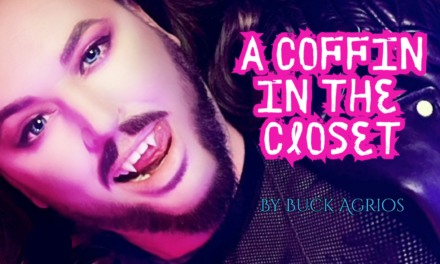


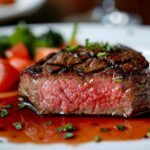
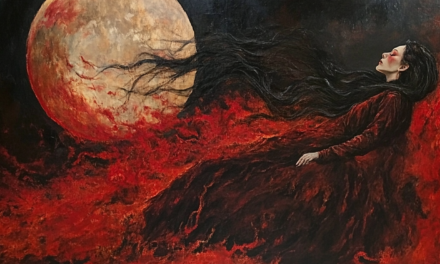
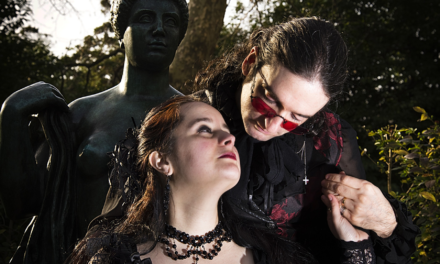


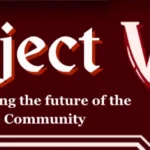
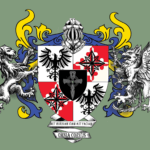
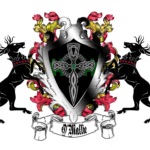



Recent Comments